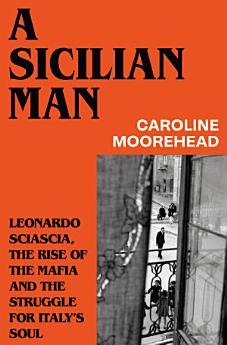A Sicilian Man: Leonardo Sciascia, the Rise of the Mafia and the Struggle for Italy’s Soul
Feb 2026 · Random House
Ebook
384
Pages
family_home
Eligible
info
infoThis book will become available on February 5, 2026. You will not be charged until it is released.
About this ebook
Corruption, sleaze and violence were woven into the fabric of 20th-century Sicilian life, as the Mafia rose to dominance; this is the story of one man who stood in opposition.
In 1986, the largest Mafia trial in Italy’s history took place in Sicily. The maxi-processo saw 471 men and 4 women take the stand, accused of kidnapping, extortion, drug trafficking and many thousands of murders. Sitting in the galley was Leonardo Sciascia, then aged 65. One of the greatest European writers of the 20th century, he had published the first Mafia novel, The Day of the Owl, in 1961, and was widely seen by Italians as a true moral figure in a country where corruption had seeped into every corner of public and private life.
Sciascia was born in 1921 and came of age as the Mafia grew to prominence across Sicily. Widespread poverty and hardship following the First World War meant that many Sicilians no longer recognised Rome’s leadership, which had left a void for local gangsters to fill. Witnessing the scale of corruption and violence, Sciascia predicted it would soon spread north, and he was right: by the 1980s, the Mafia had infiltrated every level of Italian politics and grown into an international, highly successful business.
In A Sicilian Man, prize-winning historian and biographer Caroline Moorehead charts Sciascia’s life against the rise of the Mafia, and lays out the thrilling and devastating struggle that ensued for Italy’s soul.
In 1986, the largest Mafia trial in Italy’s history took place in Sicily. The maxi-processo saw 471 men and 4 women take the stand, accused of kidnapping, extortion, drug trafficking and many thousands of murders. Sitting in the galley was Leonardo Sciascia, then aged 65. One of the greatest European writers of the 20th century, he had published the first Mafia novel, The Day of the Owl, in 1961, and was widely seen by Italians as a true moral figure in a country where corruption had seeped into every corner of public and private life.
Sciascia was born in 1921 and came of age as the Mafia grew to prominence across Sicily. Widespread poverty and hardship following the First World War meant that many Sicilians no longer recognised Rome’s leadership, which had left a void for local gangsters to fill. Witnessing the scale of corruption and violence, Sciascia predicted it would soon spread north, and he was right: by the 1980s, the Mafia had infiltrated every level of Italian politics and grown into an international, highly successful business.
In A Sicilian Man, prize-winning historian and biographer Caroline Moorehead charts Sciascia’s life against the rise of the Mafia, and lays out the thrilling and devastating struggle that ensued for Italy’s soul.
About the author
Caroline Moorehead is a bestselling and prize-winning author, and the biographer of Bertrand Russell, Freya Stark, Iris Origo, Madame de la Tour du Pin and Martha Gellhorn. Her recent books – a quartet focussed on resistance to dictatorship, particularly in Italy – were shortlisted for the Samuel Johnson Prize, the Orwell Prize and the Costa Biography Award. She lives in London.
Reading information
Smartphones and tablets
Install the Google Play Books app for Android and iPad/iPhone. It syncs automatically with your account and allows you to read online or offline wherever you are.
Laptops and computers
You can listen to audiobooks purchased on Google Play using your computer's web browser.
eReaders and other devices
To read on e-ink devices like Kobo eReaders, you'll need to download a file and transfer it to your device. Follow the detailed Help Center instructions to transfer the files to supported eReaders.








